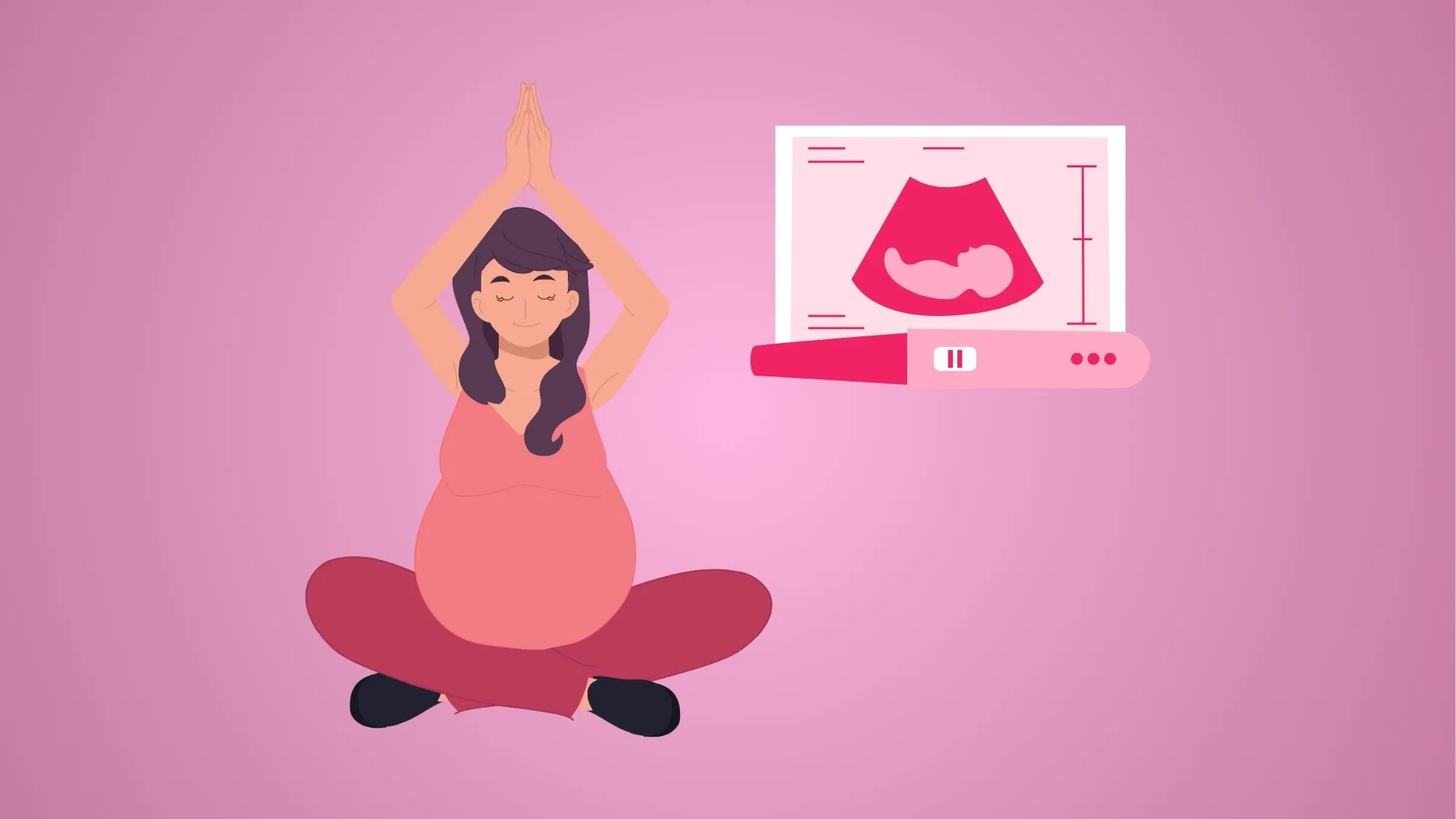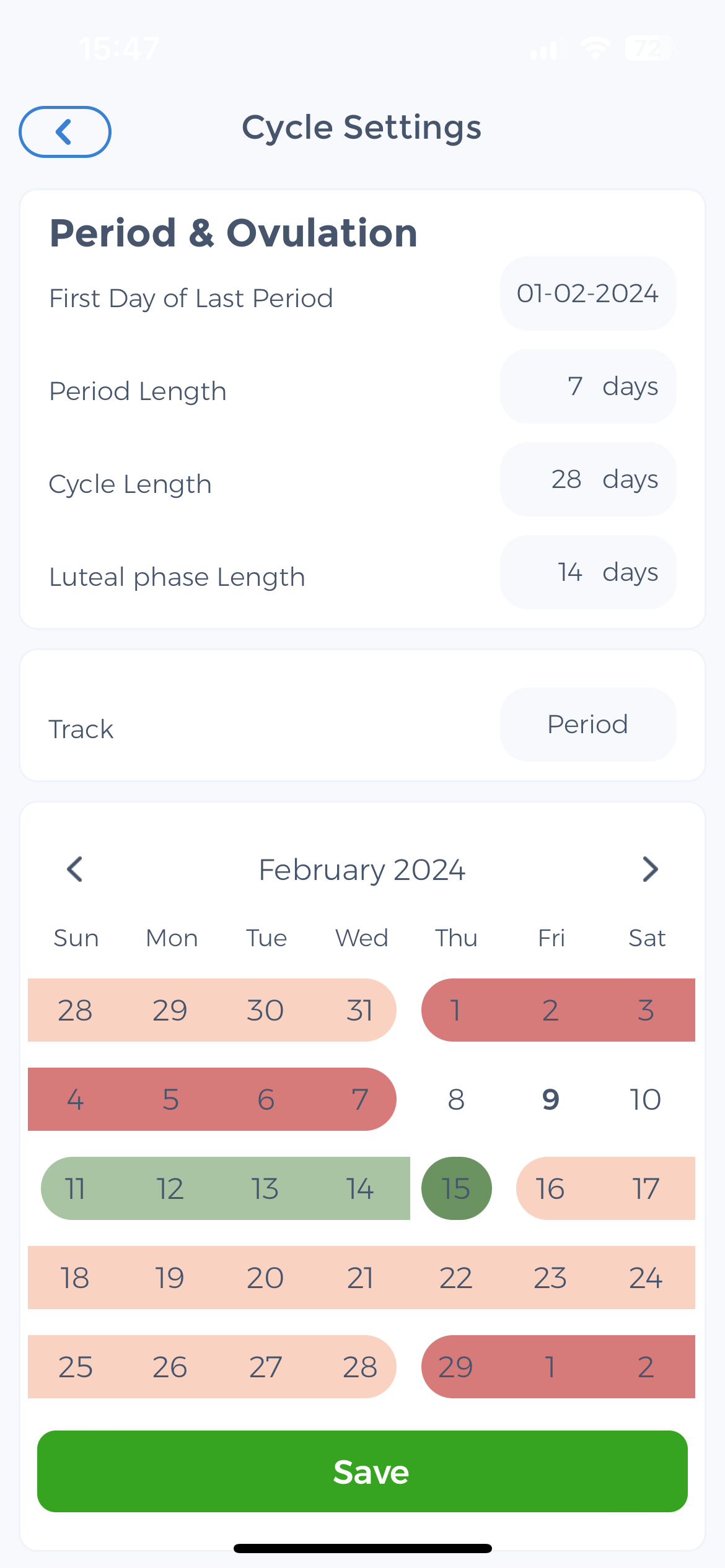
Pregnancy is a miraculous journey that brings about numerous changes in a woman’s body. However, for some women, this beautiful experience can also trigger certain health conditions, such as POTS syndrome. POTS, which stands for Postural Orthostatic Tachycardia Syndrome, is a disorder that affects the autonomic nervous system, causing a range of symptoms when standing up, including a rapid heartbeat, dizziness, and fainting. In this article, we will explore the connection between pregnancy and POTS syndrome, understanding its causes, symptoms, and management strategies to ensure a healthy and fulfilling pregnancy journey.
What is Postural Orthostatic Tachycardia Syndrome (POTS)?
To comprehend the link between pregnancy complications and POTS syndrome, it is essential to first understand what this syndrome entails. Postural Orthostatic Tachycardia Syndrome is a type of dysautonomia, a disorder that disrupts the normal functioning of the autonomic nervous system. The autonomic nervous system controls involuntary bodily functions such as heart rate, blood pressure, and digestion.
Defining POTS Syndrome
Postural Orthostatic Tachycardia Syndrome is characterized by an abnormal heart rate increase when transitioning from a lying or sitting position to standing up. In a healthy individual, this transition may cause a slight increase in heart rate, but for those with POTS syndrome, the heart rate tends to rise excessively, often by more than 30 beats per minute. This rapid heart rate can lead to symptoms such as lightheadedness, fainting, chest pain, and fatigue.
Diagnosis of POTS Symptoms
Identifying the symptoms of POTS syndrome is crucial for early diagnosis and appropriate management. Some common symptoms include:
- Dizziness or lightheadedness
- Frequent fainting or near-fainting episodes
- Rapid heartbeat or palpitations
- Shortness of breath
- Fatigue
If you experience these symptoms, it is essential to consult a healthcare professional who specializes in autonomic disorders. They will conduct a thorough evaluation, including a detailed medical history, physical examination, and possibly additional tests such as a tilt-table test or autonomic function tests to confirm a diagnosis of POTS syndrome.
Living with POTS syndrome can be challenging, as the symptoms can significantly impact daily life. Simple tasks like standing up or taking a shower can become exhausting and overwhelming. Many POTS patients find it helpful to make lifestyle modifications to manage their symptoms effectively.
Some strategies that may be beneficial include:
- Increasing fluid and salt intake to help maintain blood volume and prevent dehydration.
- Engaging in regular exercise, such as low-impact activities like swimming or stationary cycling, to improve cardiovascular fitness and manage symptoms.
- Wearing compression stockings to help improve blood flow and prevent blood pooling in the lower extremities.
- Implementing dietary changes, such as consuming smaller, more frequent meals, to prevent postprandial hypotension (low blood pressure after eating).
It is important to note that clinical course and each individual’s experience with POTS syndrome may vary, and what works for one person may not work for another. Therefore, it is crucial to work closely with healthcare professionals to develop a personalized treatment plan that addresses the specific needs and challenges of each individual.
Pregnant Patients and Body Changes
Pregnancy involves a series of remarkable changes in a woman’s body, both hormonal and physiological. These changes can have a significant impact on the development and management of POTS syndrome.
Let’s dive deeper into the fascinating world of pregnancy and explore the intricate hormonal changes that occur during this transformative period.
Hormonal Changes during Pregnancy
During pregnancy, there is a surge in hormonal activity with pregnant patients, with increased levels of progesterone and estrogen. These hormones play a crucial role in supporting the growth of the fetus and preparing the body for childbirth. However, their influence extends beyond these primary functions.
Progesterone, often referred to as the “pregnancy hormone,” helps relax the smooth muscles in the body, including those in the blood vessels. This relaxation allows for increased blood flow to the developing fetus and the uterus. However, in women with POTS syndrome, this hormonal effect can further exacerbate their symptoms. The relaxed blood vessels may lead to a drop in blood pressure and inadequate blood flow to the brain, resulting in dizziness and lightheadedness.
Estrogen, another key player in pregnancy, also impacts the autonomic nervous system. It affects the release of various neurotransmitters, including norepinephrine, which plays a role in regulating blood pressure. Elevated estrogen levels during pregnancy can lead to an increase in norepinephrine, potentially worsening the symptoms of POTS syndrome.
Cardiovascular and Blood Volume Changes in Pregnancy
Pregnancy leads to an increase in blood volume to support the needs of the growing fetus. This increase in blood volume can be particularly challenging for women with POTS syndrome, as their autonomic dysfunction may struggle to appropriately regulate blood flow throughout the body. As a result, they may experience symptoms such as dizziness, fainting, and an increased heart rate.
Furthermore, the cardiovascular system undergoes remarkable adaptations during pregnancy. The heart works harder to pump the increased blood volume, resulting in an elevated heart rate. For women with POTS syndrome, who already experience an abnormal increase in heart rate upon standing, this additional strain on the cardiovascular system can intensify their symptoms.
It is crucial for healthcare providers to be aware of these intricate changes and their potential impact on women with POTS syndrome during pregnancy. By understanding the underlying mechanisms, appropriate management strategies can be implemented to further fetal complications and ensure the well-being of both the mother and the developing fetus.
How Pregnancy Can Trigger POTS Syndrome
The exact mechanisms through which pregnancy triggers POTS syndrome are not fully understood. However, several risk factors may contribute to this connection.
The Role of Hormones in POTS Syndrome
Hormones play a significant role in the development and management of POTS syndrome. The hormonal changes that occur during pregnancy, such as increased progesterone and estrogen levels, can affect the autonomic nervous system, leading to an exacerbation of symptoms. Understanding these hormonal changes can help healthcare professionals devise effective management strategies to ensure a healthy pregnancy for women with POTS syndrome.
Impact of Blood Volume Changes on POTS Syndrome
The increase in blood volume during pregnancy can put additional strain on the already compromised autonomic nervous system in POTS patients. The body’s inability to regulate or increase blood volume and flow efficiently may lead to symptoms such as dizziness, rapid heartbeat, and fainting. It is essential for healthcare professionals to closely monitor blood volume changes during the third trimester of pregnancy to provide appropriate interventions when necessary.
Furthermore, it is important to note that the impact of pregnancy on POTS syndrome can vary from woman to woman. While some women may experience a worsening of symptoms during pregnancy, others may find relief from mild symptoms. This discrepancy in symptom severity can be attributed to individual differences in the underlying causes and physiological responses to pregnancy.
One possible explanation for the exacerbation of POTS symptoms during pregnancy is the increased demand on the cardiovascular system. As the fetus grows, the body requires a higher cardiac output to meet the needs of both the mother and the developing baby. This increased demand can place additional stress on the autonomic nervous system, further compromising its ability to regulate blood pressure and heart rate effectively.
Moreover, the changes in blood volume and distribution that occur during pregnancy can also contribute to the manifestation of POTS symptoms. The expansion of blood volume, coupled with the redistribution of blood flow to support the growing fetus, can lead to orthostatic intolerance and exacerbate symptoms such as lightheadedness and increased risk of fainting. Understanding these physiological changes can aid healthcare professionals in developing tailored treatment plans for pregnant women with POTS syndrome.
Managing POTS Symptoms during Pregnancy
Proper management of POTS syndrome during pregnancy is crucial to the fetal outcomes and promote a healthy and fulfilling pregnancy journey for healthy women. It involves a comprehensive approach that includes medical treatments, therapies, and lifestyle adjustments.
When it comes to medical treatments, there are several options that can help regulate heart rate and blood pressure. Beta-blockers and fludrocortisone are commonly prescribed medications for POTS syndrome. However, it is important to consult with a healthcare professional to determine the most suitable medications for your specific situation. They will take into consideration potential interactions and pregnancy-related contraindications, ensuring the safety of both pregnancy medications for you and your baby.
Therapies for POTS Patients and Pregnant Women
 In addition to medications, various therapies can be beneficial in managing POTS syndrome during pregnancy. Physical therapy exercises, for example, can help improve muscle strength and flexibility. They can also assist in maintaining cardiovascular fitness and alleviate symptoms. Occupational therapy, on the other hand, can focus on maintaining daily activities and preventing deconditioning. Lastly, counseling or cognitive-behavioral therapy can help individuals cope with the emotional challenges of living with a chronic illnesses, providing much-needed support during this transformative time.
In addition to medications, various therapies can be beneficial in managing POTS syndrome during pregnancy. Physical therapy exercises, for example, can help improve muscle strength and flexibility. They can also assist in maintaining cardiovascular fitness and alleviate symptoms. Occupational therapy, on the other hand, can focus on maintaining daily activities and preventing deconditioning. Lastly, counseling or cognitive-behavioral therapy can help individuals cope with the emotional challenges of living with a chronic illnesses, providing much-needed support during this transformative time.
When it comes to lifestyle adjustments, there are several measures that can significantly improve the management of POTS syndrome during pregnancy. One important adjustment is increasing fluid intake to maintain adequate hydration levels. Staying hydrated is crucial for overall health and can help alleviate symptoms associated with POTS syndrome. Additionally, consuming a balanced diet rich in nutrients, particularly foods that promote cardiovascular health, such as fruits, vegetables, and lean proteins, can further support your well-being.
Engaging in regular low-impact exercises recommended by a healthcare professional, such light exercise as swimming or stationary cycling, can also be beneficial. These exercises help improve cardiovascular fitness without putting excessive strain on your body. Furthermore, wearing compression stockings can help improve blood circulation and reduce swelling in the legs, providing much-needed relief from discomfort.
Lastly, it is important to prioritize rest and elevate your legs when feeling fatigued or experiencing symptoms. Taking breaks and allowing your body to recharge can help manage the impact of POTS syndrome on your daily life.
The Role of Healthcare Providers
Remember, it is important to consult with a healthcare professional before making any significant lifestyle changes during pregnancy. They will be able to provide personalized guidance and ensure that any adjustments you make are appropriate for your specific situation. By taking a proactive approach to managing POTS syndrome during pregnancy, you can optimize your well-being and enjoy this special time in your life.
Postpartum POTS Syndrome
 POTS syndrome can also manifest or worsen in the postpartum period, commonly referred to as postpartum POTS syndrome. Understanding the challenges associated with this phase is essential for women who have been diagnosed with POTS syndrome and are planning to have a baby.
POTS syndrome can also manifest or worsen in the postpartum period, commonly referred to as postpartum POTS syndrome. Understanding the challenges associated with this phase is essential for women who have been diagnosed with POTS syndrome and are planning to have a baby.
Understanding Postpartum POTS Syndrome
Postpartum POTS syndrome refers to the onset or exacerbation of POTS symptoms in the weeks or months following childbirth. It can be a challenging time for new mothers as they navigate the world of motherhood while managing the improved symptoms of POTS syndrome.
During pregnancy, a woman’s body undergoes significant physiological changes to support the growing fetus. These changes can put additional strain on the cardiovascular system, potentially triggering or worsening POTS symptoms. After giving birth, the body goes through a period of readjustment as it returns to its pre-pregnancy state. For women with POTS syndrome, this transition can be particularly challenging.
One of the key challenges of postpartum POTS syndrome is the need to balance the demands of caring for a newborn with managing the improved symptoms of POTS. Sleep deprivation, physical exertion, and the emotional rollercoaster of motherhood can all contribute to an increase in POTS symptoms. It is important for women with postpartum POTS syndrome to be aware of these potential triggers and take steps to control symptoms and minimize their impact.
Coping Strategies for Postpartum POTS Syndrome
During the postpartum period, it is crucial for women with POTS syndrome to prioritize self-care. Here are some coping strategies that can help:
- Delegate household tasks and responsibilities to loved ones or hire help to reduce physical exertion
- Establish a support system of family and friends who can provide emotional support and assistance when needed
- Practice relaxation techniques, such as deep breathing exercises or meditation
- Take frequent breaks throughout the day to rest and recharge
- Seek professional counseling or support groups specifically tailored to postpartum women with chronic illnesses
By implementing these self-care strategies, women with postpartum POTS syndrome can better manage their symptoms and experience a smoother transition into motherhood.
It is important to remember that every woman’s experience with postpartum POTS syndrome is unique. What works for one person may not work for another. It is essential for women to listen to their bodies, communicate their needs to their healthcare providers, and make adjustments to their self-care routines as necessary.
With the right support and self-care practices in place, women with postpartum POTS syndrome can navigate the challenges of motherhood while managing their symptoms and enjoying the precious moments with their newborns.
Takeaways: Postural Tachycardia Syndrome
Pregnancy is a time of joy, anticipation, and exceptional bodily changes. Understanding the link between pregnancy and POTS syndrome sheds light on why some women may experience exacerbation of their symptoms during this period. By recognizing the influence of hormonal changes and blood volume fluctuations, healthcare professionals can develop individualized management strategies to ensure a healthy and fulfilling pregnancy journey for women with POTS syndrome. Remember, self-care is crucial throughout pregnancy and the postpartum period, so don’t hesitate to engage in strategies like regular exercise, a balanced diet, and seeking appropriate medical care. With the right support and management, women with POTS syndrome can navigate this journey with confidence and grace.
Use the CareClinic App to Manage Preexisting Postural Tachycardia Syndrome
As you navigate the complexities of pregnancy with POTS syndrome, the CareClinic App emerges as a vital tool for managing your health journey. With features designed to track symptoms, medication, and daily activities, the app provides a comprehensive platform to monitor the nuances of your condition. By consistently logging your experiences, the CareClinic App can help you and your healthcare provider identify patterns and triggers, enabling a more tailored approach to POTS medications and symptom management.
Download the CareClinic App to Track POTS Medications
Understanding the importance of self-care and proactive mental health management, the CareClinic App also offers reminders for medication, hydration, and appointments, ensuring you stay on top of your regimen during this critical time. The app’s ability to generate health reports becomes instrumental in facilitating informed discussions with your medical team, potentially leading to improved health outcomes. To take control of your pregnancy journey with POTS syndrome, Install the CareClinic App today and experience the benefits of organized health tracking.


